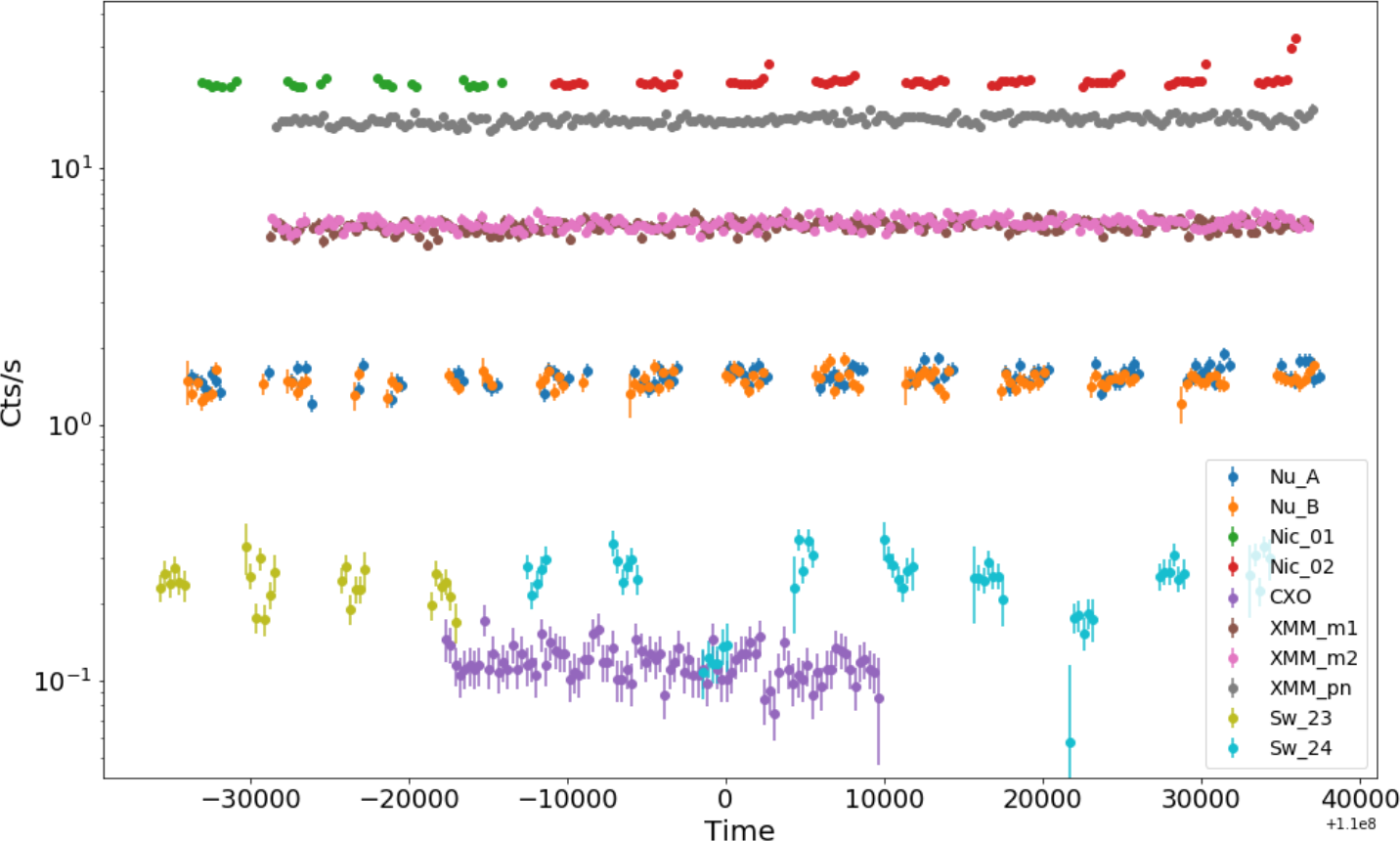NICER / ISS Science Nugget
for December 8, 2022
Cooperative Calibration
Calibration - deriving an accurate understanding of measurement performance - is an essential exercise for any observatory and its instrumentation. To calibrate their specific systems, individual space telescope facilities employ a combination of pre-launch laboratory measurements and on-orbit observations of the sky. Unlike the laboratory environment, the properties of cosmic sources of X-rays are beyond our control (we "take what we can get"), but they nevertheless provide an invaluable common point of reference for the world's independently developed telescopes. Such efforts are often coordinated by the International Consortium for High-Energy Calibration (IACHEC), which plans joint observations and annual workshops to compare methods and results.
NICER participates in IACHEC campaigns with other NASA, and international, assets. As early as NICER's on-orbit checkout in June 2017, observations of the bright and relatively stable quasar 3C 273 were conducted simultaneously by half-a-dozen observatories, five of which offer coverage of relatively "soft" X-ray light (approximately 1-10 keV in photon energy). Preliminary analyses of these and similar data have so far informed the calibration of NICER's X-ray Timing Instrument; a new effort to mine these datasets in depth is now underway.

Figure:
A collection of X-ray intensity "lightcurves," in photon counts per second and spanning nearly one day in June 2017, from five X-ray observatories that simultaneously monitored the same target, the quasar known as 3C 273, for cross-calibration purposes. From top to bottom, the telescopes represented are NICER (which offers the largest collecting area), ESA's XMM-Newton (its MOS and pn cameras), NuSTAR, Swift (its XRT instrument), and Chandra (its High-Energy Transmission Grating). Note the logarithmic scale of the vertical axis. Figure courtesy of J. Hare (Catholic U./NASA GFSC).
<< Previous
Main Index